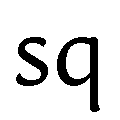

Volume 17 (2000)
Andriy Bogutskiy, Maria Lanczont, Roman Racinowski
Abstract
Large exposure near the brick-field in Haliè represents one of the most complete loess sequences in the Ukrainian Carpathian Foreland, which illustrates a progress of events covering a considerable part of the Middle Pleistocene and the whole Upper Pleistocene. The most important of these are: the Luck soil corresponding to the soil from the Zbójno Interglacial in Polish profiles and Dömnitz Interglacial (O-18 stage 9) in West European profiles, bottom part of the Upper Pleistocene (Dnieper = Odranian = Saalian I) loesses, which are extremely thick and stratigraphically divided into units of lower rank, and well developed soil complexes – Korshov and Horokhov. Investigations of the Korshov soil are a basis to discuss at least two stages/phases of pedogenesis development during the last but one interglacial (Lublinian = Treenian; O-18 stage 7). The Horokhov paleosol is connected with the Eemian Interglacial. The Dubno and Rovno soils occur within the poorly developed Vistulian loesses; the Rovno soil is a cultural layer.
Keywords: loesses, Upper Pleistocene, paleogeograpahy, Ukrainian Carpathian Foreland
Click (or shift click if you are using Netscape) here to download zipped pdf file containing full text. File size: 1MB
| Editor-in-Chief: | Tomasz Goslar |
| Co-Editors: | Małgorzata Latałowa Wojciech Stankowski Krystyna Szeroczyńska |
| Secretary |
Mariusz Lamentowicz |